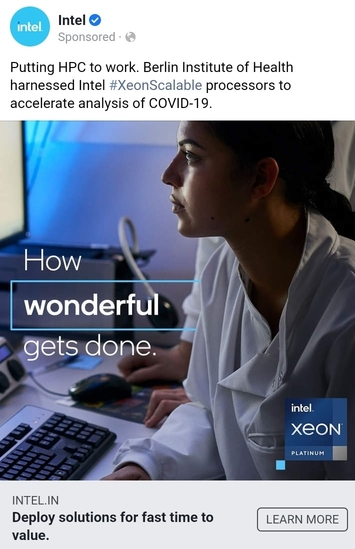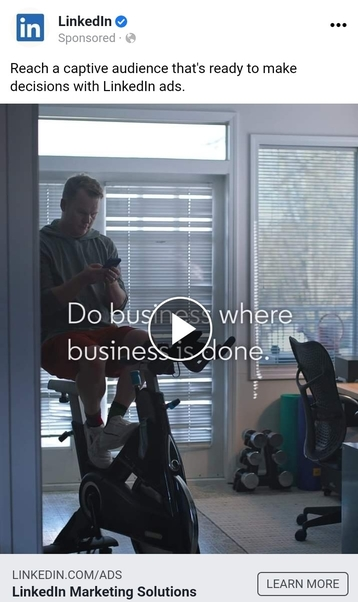Facebook Ads can prove to be an incredibly powerful tool in your marketing arsenal. After all, Facebook has a user base of 2.7 billion active monthly users worldwide & continues to be one of the most cost-effective advertising investments.
Additionally, it is cheaper than almost every other source of advertising, and the targeting options are unmatched.
Whatever you want your customers to do, be it making a purchase, visiting your website, or downloading an app – there’s a Facebook advert type for it.
No matter what type of audience you want to reach, you will always find them through Facebook. When properly used, Facebook can help brands raise their brand awareness, attract new customers and convert interested audiences into customers.
But getting started with Facebook ads demands gallons of trial and error.
Educating yourself about Facebook ads helps to know what you should be doing and what you should not be doing to ensure the success of your ads campaign. You can get a head start with our list of do’s and don’ts. So let’s talk about Facebook ads today!
#1: Don’t Forget About Mobile Viewers
#2: Don’t Blow Your Budget
#3: Don’t Expect Instant Results
#4: Don’t Forget To Keep Track
#5: Don’t Miss On Video Ads
#6: Do Target Mindfully
#7: Do Prepare Attractive Creatives
#8: Do Include A Clear & More Than One CTA
#9: Do Some Testing
#10: Do Make Use Of Facebook Pixel & Retarget Audience
#11: Do Manage Ad Comments Aptly
You can directly jump to a section of your choice or keep scrolling.
Click here to download detailed infographic on tips to master Facebook ads.
#1: Don’t Forget About Mobile Viewers
84% of Facebook’s total advertising income comes from mobile advertising.
Neither do Facebook ads appear the same on desktop and mobile, nor do your users interact with them in the same way on both devices.
Therefore, you just can't afford to ignore such a massive chunk of audience by sticking solely to desktop design. You never know when these mobile users will be responsible for most of your ad views.
Consider designing different ads for both mobile and desktop viewers to increase your odds of scoring click-throughs and conversions. Check the mobile news feed placement when deciding the placement of ads.
Protip: When you make your ads mobile-friendly, ensure that the pages where users are landing are also optimized for mobile views (like your website, landing pages, offer pages, etc.)

#2: Don’t Blow Your Budget
Facebook ads are one of the best ways to bring in new business with a pretty low budget. Low cost is that feature of Facebook ads which makes it a favorable option even for small business owners (you can spend as low as $5 a day).
If you have never run Facebook ads before, start off small. Start by spending a little and finding out what works before you increase your budget.
When your ads don't work the first time, you might be tempted to spend a few extra bucks before even identifying the root cause of the problem.
Don’t squander your money on Facebook ads!
Choose a bidding amount that is neither too high nor too low or else your competitors outbid you. Once your ads start to generate flourishing results, you can slowly increase your advertising budget. If your ads are performing poorly, stop running them. Address the issue before you start rerunning them.
Spend your money wisely on Facebook ads and invest only in the ads that generate results. If you don’t, your ad spending could spiral out of control.
Do give a read to Facebook’s guide on campaign budget optimization.
#3: Don’t Expect Instant Results
Anything worth having takes time; this is also true when we talk about Facebook ads.
Like any other social platform, Facebook uses algorithms to learn, adapt and deliver the best result possible for your campaign.
When you create an ad campaign on Facebook and select an objective, Facebook optimizes your campaign for that objective. Facebook will show your ads to the people that are most likely to take the desired action.
To do this effectively, Facebook experiments early on and shows your ads to different types of people within your target audience. In this manner, Facebook figures out who is most likely to take the desired action. This period is known as Facebook Ads Learning Phase, which ends once you have generated 50 optimization events.
But Facebook does not stop gathering data and optimizing your ad campaign after the learning phase has ended.
The longer your ad campaigns are active and the more optimization events they generate, the easier it becomes for Facebook to optimize your ad campaigns. This leads to a reduced cost per optimization event and more stable results.
We recommend letting your campaign run for 24 – 48 hours before deciding if any changes are required. Facebook’s marketing staff suggests a gap of 14 days between any significant changes to your ad campaign.
#4: Don’t Forget To Keep Track
If you have to tailor your future ads, you need to measure the success of all your ads. Otherwise, you will be wasting your money on viewers who don’t have any interest in your products or services.
After you have tested out a few of your Facebook ads, you can set clear goals for your campaign like conversions, reach, shares, likes, etc. and monitor your results frequently.

While you are running ads, you should also keep a close watch on your Facebook ads manager. Facebook ads manager is a potent tool for tracking essential metrics such as CTR, CPM, CPC, impressions, reach, etc.
You surely don't want to get so bogged down in the details of an ad campaign that you lose sight of key goals like what you are trying to get done from your target audience. Focus on getting as many goals achieved for the least amount of budget.
Whether there be wins or fails in your advertising attempts, make sure to document your results. In this manner, you will continue to improve with time and not lose sight of what you have tested in the past.
Track the right metrics which align with your campaign goals and summarize your learnings.
Statusbrew’s Facebook Paid Performance Report contains campaign data displayed against different metrics and KPIs to help identify the vital aspects of various campaigns. You can measure metrics such as Total Spend (Total amount spent on the selected campaigns), Impressions, CPM, Engagement, CPE, Clicks, and CPC. Statusbrew's Report Builder allows you to create reports that can be customized according to your needs.

As the Facebook ads algorithm evolves quite rapidly, new opportunities will arise that you may have previously disregarded based on test results. Hence, it's essential to track the performance of your campaign regularly and keep updating your learnings.
#5: Don’t Miss On Video Ads
45% of people watch more than an hour of Facebook videos every week.
This is an overwhelming stat and one that brands should take advantage of. Video ads have a higher chance of converting audiences if you are creative enough.
You will be immensely “praised” by Facebook’s algorithm for using this ad format.
Hence, it's high time that you get ahead of the trend and promote a customer testimonial, a how-to, or behind-the-scenes video through Facebook ads.
Recently Facebook has improved its platform to upload and play videos. Since then, videos have become the most viewed content on Facebook, with almost 100 million hours of video being viewed on Facebook daily.

Facebook rewards the pages that publish most videos with higher spots in their followers’ organic feed. This means that by using video in your Facebook ads, you can improve your reach significantly.
So when you create relevant video content and use it in ad targeting, Facebook will ensure that the right people view it and, most importantly, take action on your message. Video ads don't cost you an arm or leg either; your business only needs a mobile phone, some commonly used video editing apps, a business Facebook account, and some creativity to get started.
To boost your success with Facebook ad videos:
- Target your video ads to specific audience segments
- Grab the viewer's attention in the first few seconds
- Include captions or text as most people watch Facebook videos on mute
Protips:
-
Ensure that your Facebook video ads work on mobile devices as well or create specific mobile-friendly content such as vertical videos.
-
Statusbrew’s Facebook Paid Performance Report also shows the total number of video views driven by a selected campaign along with the average cost of a single video view (CPV) received.

#6: Do Target Mindfully
Audience targeting forms the base of Facebook ads campaigns. To whom you show your Facebook ads affects the overall success of your campaign.
Don’t base your ad campaigns on guesswork. Rather, take advantage of the targeting options offered by Facebook to narrow down on your audience.
Don’t Target Too Big Of An Audience
If you target an extensive audience base, you will end up paying for ads delivered to users who are not even interested in your business. When you target a vast audience base, you run the risk of burning your budget very quickly, hoping that when more people see your ads, they have an enormous impact. But the truth is contradictory.
To target the correct audience base, it’s essential to understand who is most likely to respond to your ad. Be as detailed as possible with your targeting.
The idea is to get a 360-degree view of your narrowed audience to understand better which targeting options can help you fulfill your ad campaign goals.

Do Nurture Your Existing Customers
Once some of your audiences are converted, you can’t leave them behind completely. Targeting such existing customers will be more affordable than targeting a new audience base.
Encourage such customers to make another purchase and convert them into your brand advocates. It will take less time and effort to encourage purchasing to someone who already trusts your brand than someone who has never heard of your store before.
Use these two targeting tricks to reach the audiences that will be interested in your Facebook ad.
- Target your existing customers by uploading a customer list to Facebook Custom Audience.
- Target new customers who are similar to your existing customers by creating a Lookalike Audience.
Protip: Don’t overlap your targeting
If you’re running multiple ad campaigns simultaneously, you need to be careful that your audience targeting does not overlap. This will cost you more money and damage your results as your ads will be competing against one another.
#7: Do Prepare Attractive Creatives
The better the creatives you use in your ads, the better it will resonate with your potential customers.
While selecting creatives for your ad, use Facebook’s “thumb-stopping content” rule. Will the creatives you use in your ad stop you or any of your family members from casually scrolling through your feed? If the answer is no, better go for another creative.

Another essential aspect to consider is the media size. For best results, your images and videos should be in three different sizes.
- 1200×628
- 1080×1920
- 1080×1080
Learn more about Social Media Image Sizes Guide
Your image should directly relate to the product or service you are advertising. The creative should draw the user’s attention and be attractive to look at. Don't use generic or random images in your ads.
Having the perfect image is also helpful if you’re planning to use Facebook dynamic ads – which are targeted Facebook ads that show your relevant products to people who have visited your website.
Learn more about How Facebook Dynamic Ads Are A GameChanger For Businesses
And finally, choose an ad image that is clear and with high resolution. Your users will quickly grow tired of seeing the same creatives over and over again. Therefore, consider refreshing ad creatives at least every two weeks to increase their performance rate.
Give a read to Facebook’s guide on best practices for image ads.
Don’t Overuse Text In Creatives
The more text you advert has, the fewer eyes it will catch. Hence you will have to spend more money to get the desired results.
Years ago, Facebook had this thumb rule that no more than 20% of any images or video should contain text. But today, Facebook grades images differently. Still, a 20% estimate is an excellent rule to follow.
Today, Facebook ads with loads of text won’t be rejected, but they will cost more.
If an ad contains too much text, Facebook will penalize you by restricting its reach. That means fewer people will see your ad.

#8: Do Include A Clear & More Than One CTA
Since you don’t have the luxury of your viewer’s time, your CTAs must be simple enough for a viewer to comprehend within seconds.
How many ads have you seen with CTA of a similar effect?
“Join my [xyz] course today to start making money! ”
And ended up NOT clicking on any of these ads.
Well, you’re not alone. Nowadays, even your customers don’t click on such ads anymore. Your audience is becoming smarter day by day.
Also, such “scammy-looking” ads don’t even comply with Facebook's Ads Policies. Therefore, they are usually rejected right away.

In fact, don’t just include one CTA; use multiple CTAs. Don't be like others who save their CTAs until the end of the ad or your audience won't act fast enough and take action on the ad.
If you are promoting different products and services within the same ad, chances are that your ad and its content are relevant to a larger audience than what you think it to be.
For example, if you run a B2B company, you might want to get sign-ups to your app, and you can also promote one of your products. Therefore, in addition to the sign-up CTA, you can also add a link to one of your landing pages that contain more information about your product or your company.
Of course, you want people to sign-up to your app, but you need to digest the fact that not everyone in your target audience would subscribe in the very first place (even if you are offering them a free trial.) So you can lure them to your website with something cost-effective for them like “read more”, and it will become much easier for you to get them to subscribe later on.
#9: Do Some Testing
A/B testing (also known as split testing) is where you can experiment with different versions of your ads by playing around with headlines, CTAs, and graphics to see which one gets more clicks, likes, and results in high ROI.

Even if your ad campaign is running successfully, you should consider changing it every few months to avoid ad fatigue for your audience.
If you have to figure out the best-performing elements, you only have to change one of these factors at a time. If you rotate all ad elements during A/B testing, you will be creating a completely different ad. Then, you won’t be able to pinpoint which element is having more impact on your ad’s performance.
Once you start performing A/B testing, you would be surprised at what you can learn from a simple test. The more you try and test your Facebook ads, the more you can perfect the ideal ad for your campaign.

#10: Do Make Use Of Facebook Pixel & Retarget Audience
Consumers typically see a brand multiple times before making a purchasing decision.
By installing a bit of Facebook code on your website, you can track how many people visited your website over the past 180 days. Facebook pixel is a piece of code that you can add to your website to increase the overall impact of your Facebook ad campaign.
Facebook pixel is triggered when someone visits your website and takes action like abandoning the cart.
Facebook pixels automatically create a custom audience base consisting of people who visit your website. Retargeting allows you to advertise to such an audience who has interacted with your page.
Using Facebook pixels, you will be able to show these people targeted ads for the products that they had previously viewed on your website. So when a user goes back to their Facebook feed, they are targeted with your advert. Therefore you can reach a ‘warm’ audience base, who are more likely to convert into a sale.
You can target the recent visitors with Facebook ads and give them an opportunity to interact with you again. Targeting visitors from the past 30 days is a good practice.
View retargeting as an opportunity to show visitors an aspect of your product or service that they might have missed the first time on your website.
Learn more about how to create and install a Facebook pixel.
#11: Do Manage Ad Comments Aptly
You might have created the best ad in the history of Facebook, but if you forget to monitor and reply to ad comments, you run the risk of turning a great ad into a social media crisis. Don't let your promoted post hang on Facebook, with hundreds of people leaving their queries and comments.
Think of it as if your customers might have come across your compelling ad and want to learn more about the product or service. Such Facebook users are keen to learn more by jumping into the comments section of these ads. Don't be a brand that just pushes messages in front of their audience and runs away. Instead, become social while advertising on a social platform.
Managing Facebook ad comments is a serious game, there’s more to win but also more to lose if you make a mistake.
Statusbrew provides a solution to manage your ad comments effectively by offering one inbox for your all social engagement. Engage Inbox delivers all your regular ad comments & dynamic ad comments in one place where you can filter and arrange them by priority.
You can clear out the noise in your ad comments by hiding, deleting, or disabling unwanted comments on your regular and dynamic ads. You can get better click-through rates by moderating comments on your social profiles using Statusbrew’s Ad Comment Management feature.
You can create customized automation rules to automate your entire comment management workflow.
Want to discuss further? Book a free demo or start your free trial today!
Statusbrew is an all-in-one social media management tool that supports Facebook, Instagram, Twitter, Linkedin, YouTube, and even Google My Business.
Infographic

Citation Policy: Please feel free to use these infographics in any commercial or non-commercial capacity. If you use the infographics, we require a reference back to Statusbrew Blog.




Explore the Statusbrew range of social media tools
Cancel anytime!